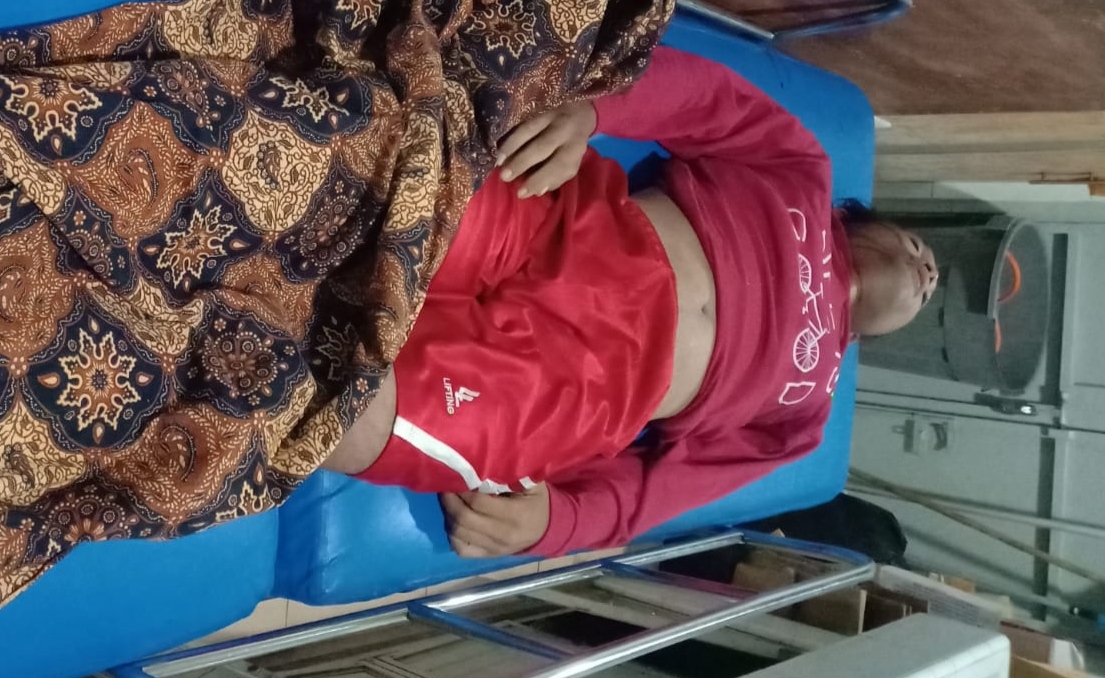Everything really worked out: in wonderful, sunny autumn weather, people flocked to the Weltwald at the Kranzberger Forst on Saturday afternoon. Because the Freising Association 3Klang and the Bavarian Forest Administration invited you to a very special experience, a musical walk in the forest.
“People are happy that they can go out again after the difficult Corona period, meet, get information about the world forest and even listen to small concerts,” said the head of the world forest, forester Herbert Rudolf, describing the concept. He accompanied the walk, provided information about the world forest and answered the guests’ questions at six stations. 3Klang had already organized a similar event in winter. Gottfried Herrmann, the director of the cultural association, had the idea for this successful symbiosis of enjoying nature and music.
-
At six stations, visitors to the forest walk experienced a variety of music …
Photo: Johannes Simon
–
… for example shanties …
Photo: Johannes Simon
–
… but also classical, jazz and flamenco.
Photo: Johannes Simon
–
–
–
At the first station, the “Tulpenbaum” information pavilion, Andreas Kurz on bass, Claus Koch on saxophone, Daniel Laskay, also on saxophone, Flad Cojocaru with his accordion and as a spontaneous guest, Roman Seehon on drums, spread a good mood with jazz and swing .
On the way to the second music station, the pavilion at the Asian garden, where Martin Kuhlmann played flamenco, the group took a break and forester Herbert Rudolf reported on the beginnings of the Freising World Forest. This project, which was still young for the life of a tree, started in 1987, so all non-native trees are no more than 30 years old, according to Rudolf. While there are around 30 indigenous tree species in our world, there are 300 in the world forest, all of which come from regions of the temperate latitudes so that they can cope with our climate, explained Rudolf. One day there should be 600 tree species. The world forest is like a botanical garden, but it consists only of trees, according to Rudolf.
From North America, from Europe and the Middle East, from Central and East Asia, seeds are continuously imported, grown in a nursery and the young plants are then planted, the forester described. A listener had asked whether the purchase of small trees did not involve the risk of diseases being brought in. Rudolf was able to reassure him that there is no such risk if you only import seeds.
-
South American music also played in the world forest.
Photo: Johannes Simon
–
The visitors were not only enraptured by the concerts, …
Photo: Johannes Simon
–
… but also from the information about the 300 different tree species that grow in the Freising World Forest.
Photo: Johannes Simon
–
–
–
The music that awaited the visitors at the various stations was just as varied as the trees the forester spoke about. After rousing flamenco, Seref and Öyku Dalyanoglu took the guests to Turkey with their music, which appropriately sounded under trees from the Amur region. Cesar Tapia had brought his guitar with him and played in the neighborhood of the Eastern European trees and at the idyllically located, small St. Clemens Church, the 3Klang flute ensemble awaited the visitors.
The America Garden in the Weltwald creates a touch of the North American landscape in the Weltwald with rocks, grass and marshland. Here in the “Rocky Mountain” planting district there are trees from the Wild West, such as the Ponderosa pine or the Colorado fir. The last stop on this tour, which is inspiring in every respect, was the Freising “Shanty Choir”. Not enough of the impressions, the visitors also looked at the sculptures that lined their way. For example, “Ligneus Globus” by Stephan Esterbauer, a spherical wooden sculpture with cavities that looks different when viewed from each side. “We are overwhelmed by the many guests” the 3Klang organizers agreed on this afternoon with world music under trees from all over the world.
– .
Related posts:
Jean-Luc Godard: the founder of the "New Cinema Wave" has chosen to end his life with euthanasia at ...Family Produces Two Camp Waes Recruits Who Make it to the End - Emotional Reunion and Tough Challeng...Gillis spectators rage over Nicol freeing the galloping dog: "Stupid Snork"President of Egyptian Authors Association Speaks Out on Umm Kulthum Heritage Ownership Crisis


